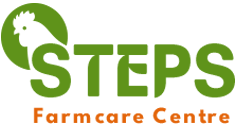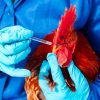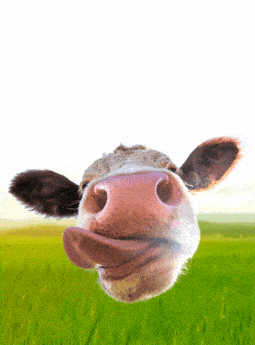
Elastration in Livestocks

1. Introduction to Elastration
What is Elastration, and How Does it Work?
Elastration is a non-surgical method used to castrate male livestock, particularly cattle and sheep. It involves placing a rubber band around the base of the scrotum to restrict blood flow and eventually cause the testicles to atrophy and fall off. This method offers several advantages over traditional surgical castration. Elastration is a common method used in livestock management for castration and tail docking, primarily in animals like sheep, goats, and cattle. The process involves the use of a specialized tool, called an elastrator, to apply a small, strong rubber ring around the base of the scrotum (for castration) or tail (for docking). The rubber ring constricts blood flow to the targeted area, which eventually causes the tissue to atrophy and fall off naturally within a few weeks.
Castration
- Method: Involves surgically removing the testicles.
- Advantages: Can be performed quickly and efficiently, and it is often considered to be more effective in preventing breeding.
- Disadvantages: Requires anesthesia, can be more painful for the animal, and carries a higher risk of infection and complications.

Castration is a Surgical Procedure
Why is it a Preferred Method for Castration and Tail Docking?
Elastration is widely preferred by farmers for several reasons:
- Minimally Invasive: Unlike surgical castration or docking, elastration involves no incisions or exposure to open wounds, reducing the risk of infections and complications.
- Cost-Effective: Elastration is a low-cost solution for castration and tail docking. It requires only an elastrator and rubber rings, which are inexpensive and easily available.
- Quick and Easy: The procedure is straightforward and can be done quickly, which is especially important for farms managing large herds.
- Less Stress on the Animal: While animals may experience temporary discomfort, the overall stress level is lower compared to traditional methods.
- Higher Recovery Rates: Animals tend to recover faster from elastration than from surgical procedures.
Overview of the Elastrator Tool and Its Benefits
The elastrator is the key tool used in elastration. It is a handheld device designed to stretch and place rubber rings around the scrotum or tail of the animal. The tool itself is simple and user-friendly, with scissor-like handles that open and close the four prongs to hold and apply the rubber rings.
Key benefits of the Elastrator with 100 Rubber Rings include:
- Durability: Built to last, the elastrator is made from high-quality materials that ensure longevity, even with repeated use.
- Precision: The elastrator allows for accurate placement of the rubber rings, ensuring effectiveness and reducing the risk of errors.
- Comfortable to Use: The ergonomic design ensures that farmers can perform the procedure efficiently without strain, even for large numbers of animals.
- Comes with 100 Rubber Rings: This package provides excellent value, giving farmers a sufficient supply of rubber rings to manage multiple animals over time.

2. Why choose elastration?
Cost-Effectiveness and Efficiency
- Reduced Labor: Elastration requires less labor compared to surgical castration, as it can be performed by a single person with minimal training.
- No Anesthesia: The procedure does not require the use of anesthesia, which can be expensive and time-consuming.
- Reduced Downtime: Animals can return to their normal activities much sooner after elastration compared to surgery, minimizing disruptions to livestock management.
Reduced Risk of Infection and Complications
- Minimized Tissue Damage: Elastration causes minimal tissue damage compared to surgical castration, reducing the risk of infection and complications.
- Faster Healing: The healing process after elastration is typically faster, as there is no open wound to be cared for.
- Improved Animal Welfare: Elastration is generally considered to be a more humane method of castration, as it causes less pain and stress to the animal.
Elastration is more humane and Safe
3. Step-by-Step Guide: How to Use an Elastrator
Detailed Instructions on How to Use the Elastrator and Apply Rubber Rings:
- Gather Equipment: Ensure you have the elastrator and rubber rings ready. You may also want to have gloves for better grip and hygiene.
- Restrain the Animal: Securely restrain the animal to prevent sudden movements. For smaller animals like lambs or kids, holding them in a sitting position often works well.
- Position the Ring: Place a rubber ring onto the four prongs of the elastrator. Squeeze the handles to expand the ring.
- Apply the Ring: For castration, pull the scrotum through the expanded ring, ensuring both testicles are below the ring before releasing it. For tail docking, position the ring where you want to dock the tail.
- Release the Ring: Slowly release the elastrator handles, allowing the ring to contract around the base of the scrotum or tail.
- Monitor the Animal: Ensure the ring is correctly placed and that the animal is not showing signs of distress beyond normal temporary discomfort.

Tips for Ensuring the Process is Safe and Effective:
- Use New Rubber Rings: Always use fresh rubber rings to ensure elasticity and strength.
- Check Ring Placement: Make sure both testicles are below the ring during castration. Misplacement can cause complications.
- Do It Early: Elastration is most effective when performed on young animals (usually between 1-2 weeks of age).
- Sterilize Equipment: Keep the elastrator clean to avoid introducing bacteria during the procedure.
Best Practices for Caring for Animals Post-Elastration:
- Monitor for Infection: Watch for any signs of swelling, infection, or discomfort beyond the first few days.
- Provide a Clean Environment: Keep the animals in a clean, dry area post-elastration to reduce the risk of infection.
- Ensure Proper Nutrition: Ensure animals have access to adequate food and water to support recovery.
4. Which Animals Can Benefit from Elastration?
List of Livestock Suitable for Elastration:
- Goats: Castration in young male goats (bucklings) is commonly performed with elastration.
- Sheep: Used for both castration and tail docking in lambs.
- Cattle: Castration in young calves is a typical application of elastration.
- Pigs: While less common, elastration can be used for castration in piglets.
Why Younger Animals Are Ideal for This Procedure:
Reduced Risk of Complications: Younger animals are less likely to develop infections or complications post-elastration.
Easier Recovery: Young animals tend to recover faster due to their smaller size and less developed tissues.
Less Stress and Pain: The procedure is less painful and traumatic when performed at an early age, reducing stress on the animal.
References:
- American Veterinary Medical Association: https://www.avma.org/
- National Agricultural Library: https://www.nal.usda.gov/
- Beef Cattle Research Laboratory: https://beef.unl.edu/beef-research-facilities-programs


